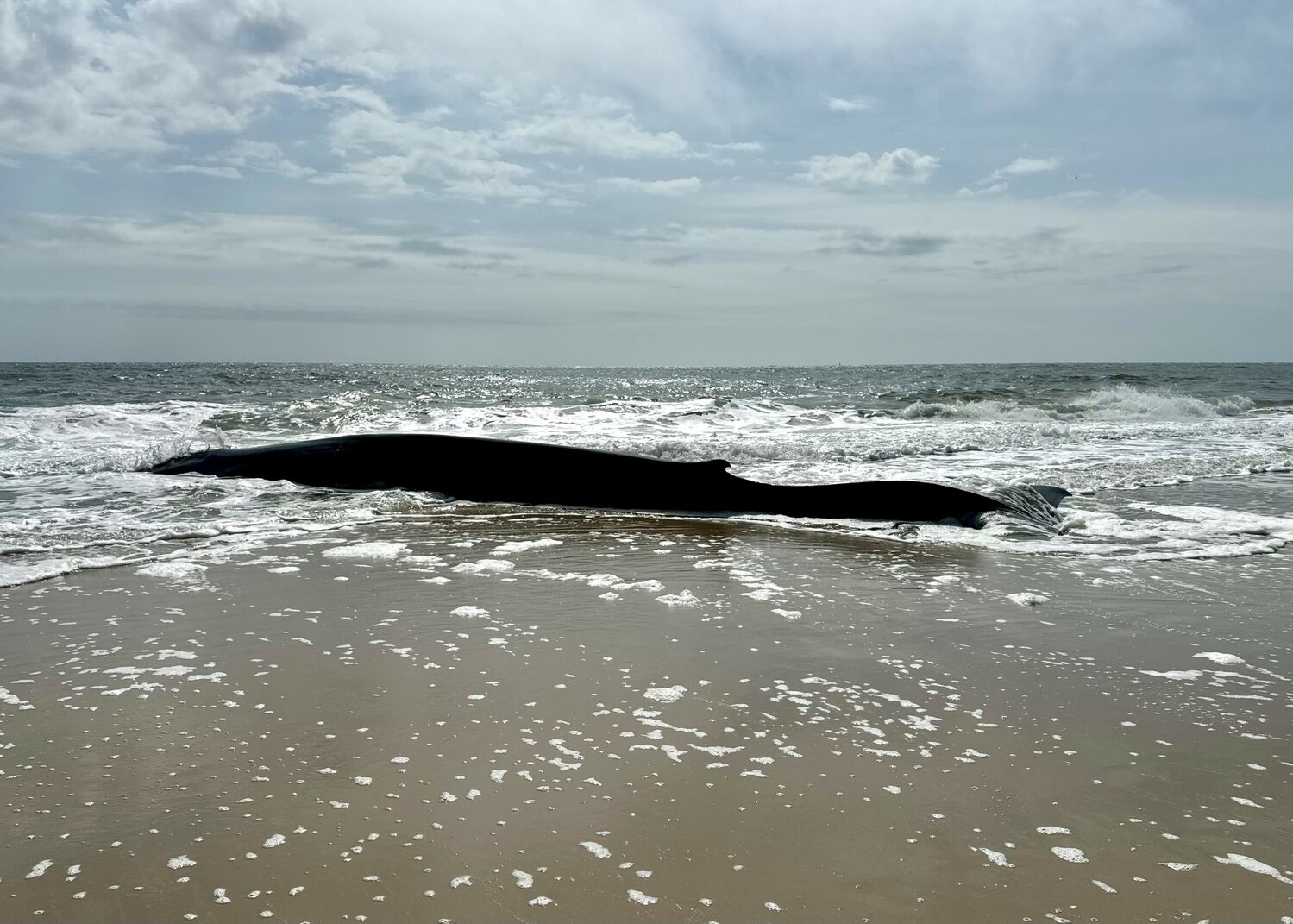Tests performed on dead whale that beached itself north of Indian River Inlet
Results of necropsy pending, but disease suspected
While pathology reports are weeks away regarding a young male fin whale that beached itself Sunday in Rehoboth Beach, a marine expert said she suspects the animal was suffering from an illness that may have been transmissible to humans.

You must be a member to read this story.
Join our family of readers for as little as $5 per month and support local, unbiased journalism.
Already a member? Log in to continue. Otherwise, follow the link below to join.
Please log in to continue |
Tests performed on dead whale that beached itself north of Indian River Inlet
Results of necropsy pending, but disease suspected
LEWES — While pathology reports are weeks away regarding a young male fin whale that beached itself Sunday, a marine expert said she suspects the animal was suffering from an illness that may have been transmissible to humans.
“When something like this is happening, it’s important you don’t get into the water with the animal,” said Suzanne Thurman of the Marine Education, Research & Rehabilitation Institute. “When you’re dealing with something like this, you have to remember they are mammals, and when disease is suspected, as is in this case, you have to be aware it could be something transferable to humans.”
She described the 50-foot specimen as “subadult and emaciated,” meaning it was old enough to have weaned from its mother, but it had not yet reached the average size for an adult male of the species — about 70 feet long and up to 150,000 pounds.
Fin whales are second only to blue whales in terms of length, though certain other species may be heavier or longer.
She said the necropsy, which took about 13 hours, found that the animal had not been ingesting food for some time.
“Its stomach and intestines were empty, so we know it hadn’t been eating,” she said.
As part of the necropsy, several samples were taken, which need to cure for up to two weeks before they can be sent to a lab for examination. Then, results depend on the lab’s scheduling, Ms. Thurman said.
She added that she is hopeful for a disease diagnosis, since adequate samples were obtained from, among other places, the whale’s intact ear.
The Delaware Department of Natural Resources and Environmental Control confirmed that the institute is the agency’s partner in marine rescues, adding that the carcass has been buried in an undisclosed location.


 By
By 



